How much would you pay for good vinegar? And what is good vinegar anyway? Well we went to the home of vinegar, Modena, Italy to find the answers and boy, oh, boy, were we surprised! Traditional Balsamic Vinegar of Modena is nothing like what we expected.
The cost, the effort, the quality all very illuminating really. And who knew!
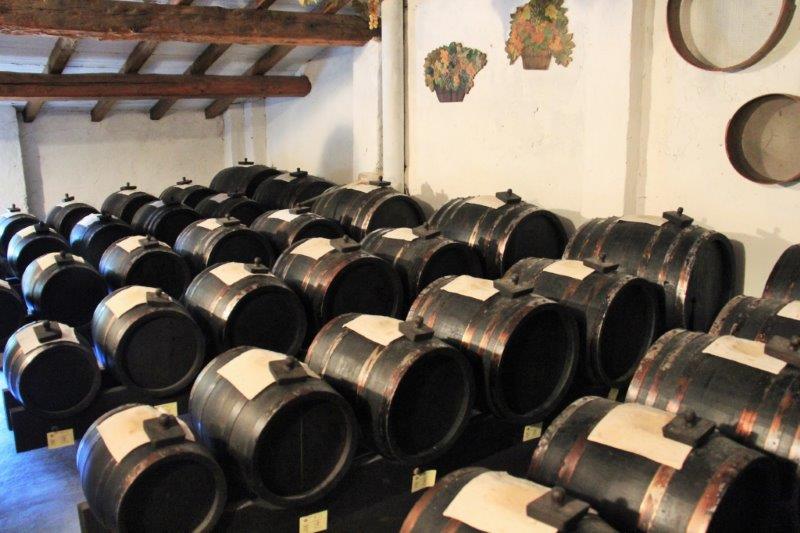 Traditional Balsamic Vinegar of Modena
Traditional Balsamic Vinegar of Modena
Let’s start with how traditional balsamic vinegar of Modena (the official name) is made as that explains a lot about both the quality and the cost.
Europe has a standard known as DOP, or protected designation of origin, designating a product as being from a certain region, made a certain way, and of a certain quality standard. It is a true artisan product usually made in limited supply.
Traditional Balsamic Vinegar of Modena is one of Italy’s most famous DOP products. There is a lot of vinegar (acetaia) labelled as balsamic vinegar and labelled as Italian or from Modena and I realize until this point this is what we had purchased. And although much of it is in small bottles and of high quality none of it is the real thing!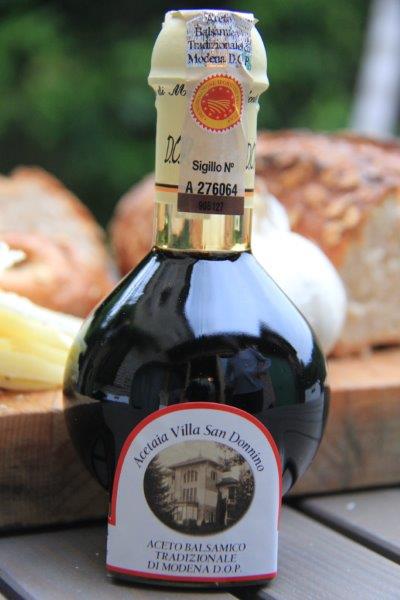
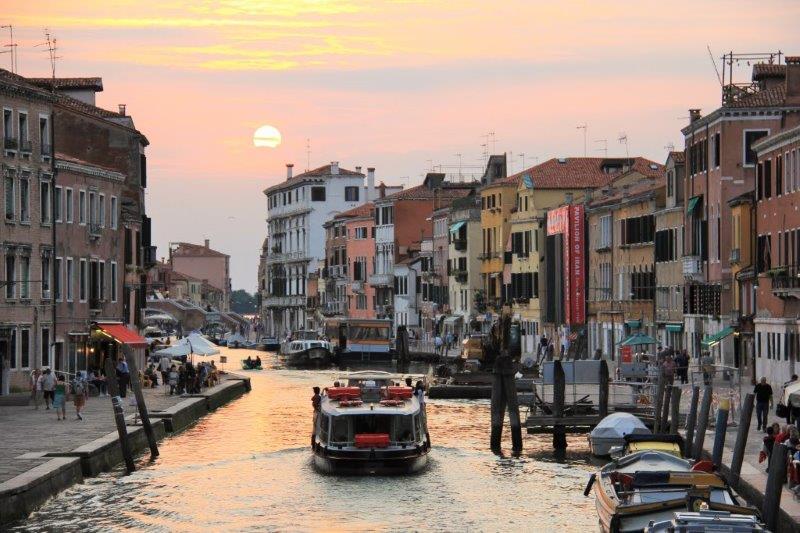
GET INSTANT ACCESS
to this PDF DOWNLOAD!
Get this one day itinerary download including a
MAP FOR EXPLORING VENICE.
To be Traditional Balsamic Vinegar of Modena, the DOP product, the vinegar must:
- Be made of white Trebbiano and red Lambrusco
- Contain one ingredient- grape must (the reduced grape juice from the above grapes)
- Be aged in one of 6 types of barrels- cherry, mulberry, juniper, oak, ash, chestnut
- Be aged for a minimum of 12 years!
- Be certified as to taste and quality (by a judging panel from the consortium)
If it meets the criteria, the Consortium (the cooperative body regulating production) bottles the vinegar , ALWAYS in the same 100 ml bottle of the same shape. Only the front label which denotes the producer varies and the color of the cap- white for 12 year or more, and gold for 25 yr or more.
So needless to say, this is not a high volume product! Production is only about 55,000, 100 ml bottles a year. A large producer might produce about 2000 bottles in a year. There are about 45-50 producers so you can do the math and work out there are some very small producers out there.
The picture at right is the official bottle. I can honestly say I have NEVER bought vinegar in this bottle. So therefore have never had Traditional Modena Balsamic Vinegar (DOP). And when we looked around at many of the shops here in the region (including in the town of Modena- we did not find the product either!)
So what are you buying . . .
Well most of what is for sale in a grocery store or local gourmet food shop is commercial vinegar, and even if it says Modena on it, it has not been produced according to the above standard. In fact, to be labelled as from Modena, only one step in the process has to be performed in Modena and it can be to any quality standard. So most of it, especially at moderate price points is only bottled in Modena. And most of the product itself is from wine vinegar with additives to make it a similar color and consistency of Traditional Modena Vinegar.
Fascinating!
But it gets better . . .
- The process outlined above begins with one of two varieties of grapes, white Trebbiano or red Lambrusco. The grapes are cooked during a long slow process to concentrate the juice, the skins and seeds are removed/strained and a concentrate is left. This is known as the “must.”
- The must is put into large wooden barrels and left to age for 3 years. These three years do not count as part of the minimum 12 years of the aging process.
- The barrels have a hole cut in them which is left open so that air can enter the barrels. This air is an important part of making vinegar, it allows the product to breathe and begin the acidification process of becoming vinegar.
- After three years the must is moved into a batterie, a series of barrels decreasing in size.
- The barrels can be used time and time again (unlike wine, whiskey or beer) and the older the better when it comes to flavoring the vinegar. In fact if the barrel becomes damaged or begins to leak with age, the barrel is repaired so it can continue to be used.
- The type of wood chosen is part of the flavoring process, it can be all the same wood or varieties- the choice will change the end flavor.
- The full barrels are left to age, usually in an attic where they are subject to both hot and cold air as the seasons change. As part of the process the product naturally evaporates and the flavor concentrates and intensifies.
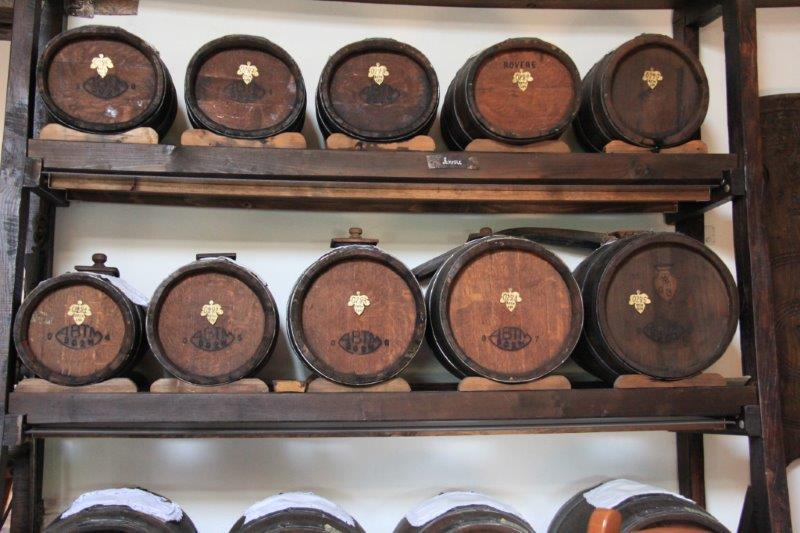
- The batterie is a series of 5 barrels, starting at 100 liter capacity and working its way down to 10. At the end of the year the next barrel in size (and the series) is used to fill its smaller neighbor. So the 100 liter barrel is used to top up the 50 liter barrel’s evaporation, the 50 tops up the 35 liter, etc. Only 10% of the capacity of a barrel may be used for the top up process. The end product is the result of a mix of barrels of various ages- thus the denomination of a minimum of 12 years of aging, some of the vinegar may be much older in the end product.
- From the last 10 liter barrel there are strict limits to the amount bottled in a given year (so as not to reduce the overall age and quality of the product). This is the barrel where the final product is sourced. It is from here the consortium will taste and certify the product. If it passes the quality tests it will then be bottled by the consortium (again to insure standards are maintained) into the DOP bottle and labelled from the individual producer.
- If the product does not meet the quality standard, it may need more aging, the product is returned to the producer until the next year when it will be tasted again.
So the volume available to become the finished product is decreasing each year by 20-30% due to evaporation. And as you have undoubtedly worked out, it takes over 12 years to get to the finished product. At which time you can only bottle 4% of your overall production capacity so as not to reduce the quality and age of your remaining product. Whew! So that explains a bit of the effort and time to create the product, and as it is a small batch, the price of the end product is quite high.
Tasting Traditional Balsamic Vinegar of Modena
Nothing like the normal grocery store variety! It is not vinegary for a start, the acidity is much lower and therefore you do not make that face or feel the burn in your throat you get from some vinegar.
The word balsamic derives from the word “balm” as in soothing remedy. Originally vinegar was made and used as a tonic or balm, especially for digestive complaints. Today vinegar, particularly organic apple cider vinegar with the “mother” still in it, is recommended for stomach complaints and to help regulate stomach acid. If you suffer from heartburn or GERD this is a proven remedy to regulate stomach acid. Traditional Modena Balsamic Vinegar is also good as a digestive!
Real vinegar is quite sweet. No funny face required! Depending on the type of wood it is aged in the taste can differ substantially. At Acetaia de Giorgio, a family run producer, we tried two different vinegars- one aged in barrels made from juniper wood and one aged in cherry wood barrels. The juniper aged vinegar was peppery; the cherry aged one was sweet. The juniper vinegar was recommended for meats and the cherry for salads and sweets. (More about uses in a moment.)
Uses of Traditional Balsamic Vinegar of Modena
Traditional Balsamic Vinegar of Modena is used in small quantities as it is highly concentrated (in taste) and also a bit syrup-like in consistency.
Good uses include:
- It does have medicinal qualities and is good for your digestive and/or throa
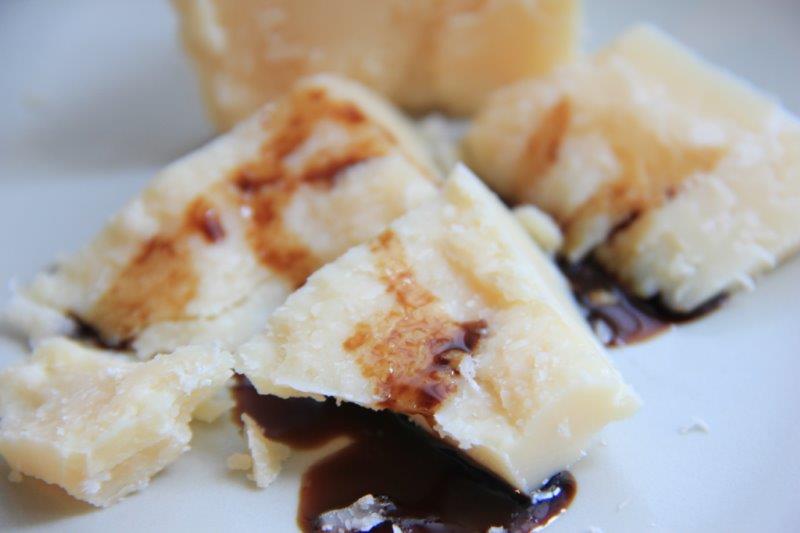 t problems, this can be through ingesting it with food or a few drops on a spoon.
t problems, this can be through ingesting it with food or a few drops on a spoon. - Served with meats, particularly red meat. Serve with lamb, venison, duck or kangaroo. Also excellent on a good beef steak.
- Served with gelato as a dessert.
- With strawberries (this is excellent if you haven’t tried it!)
- With cheese or meats- including Parmigiano Reggiano cheese and prosciutto two other DOP products from the Emilia Romagna region in Italy.
It is not good for cooking, i.e. heating as it destroys the taste. It can be used in salad dressings but personally I wouldn’t be using in my everyday dressing (too good for that!)
And what does Traditional Balsalmic Vinegar of Modena cost?
So now you have some appreciation of the process you are no doubt curious as to what the finished product costs. Well it varies, but somewhere in the €40- €80 range for a 100 ml, 12 year old (white cap) is in the ballpark. That is about $40-$80 USD at current exchange rates. So yes, Traditional Balsamic Vinegar of Modena does cost more than a bottle of fine wine (which is 750 ml).
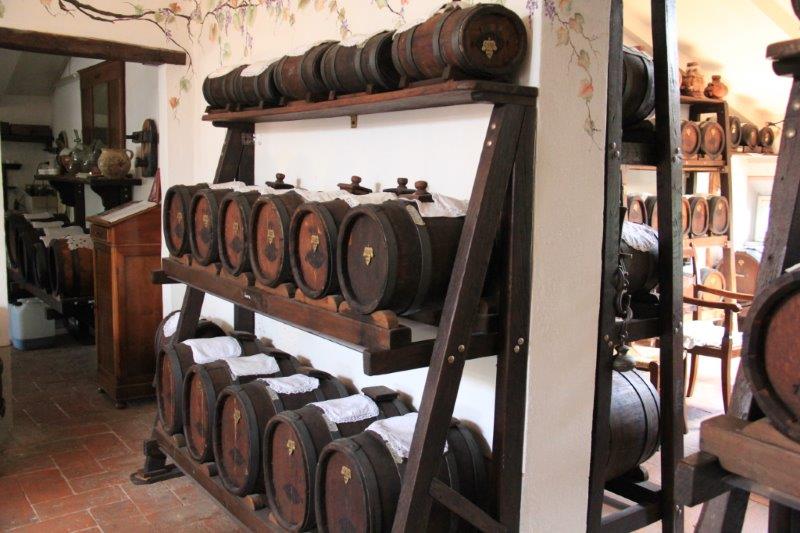 The good news is it lasts forever- aging it further is okay, leaving it open is okay, leaving it in the heat or cold is okay. Traditional Balsamic Vinegar of Modena is exposed to all of these things when it is created. Remember, you can buy vinegar that is over 25 years old. There is some vinegar over 75 years old!
The good news is it lasts forever- aging it further is okay, leaving it open is okay, leaving it in the heat or cold is okay. Traditional Balsamic Vinegar of Modena is exposed to all of these things when it is created. Remember, you can buy vinegar that is over 25 years old. There is some vinegar over 75 years old!
One last interesting story about vinegar. It was Italian tradition to start a batch of vinegar when your daughter was born, when she wed, the final product is her dowry. At Acetaia de Giorgio, Giorgio, the owner and fourth generation to maintain the family tradition of vinegar production at the family home just outside Modena, has a product of 25+ years vinegar “Carlotta 1986“ named for his daughter. It was started when she was born.
At Acetaia Villa San Donnino we found some other interesting vinegar products from the region:
- Balsamic Jam- excellent served with cheese
- Condiment Vinegar- made using the traditional process described above, but bottled and sold at about 6 years. So it is not a DOP product (it doesn’t meet all of the criteria). But it is an all natural vinegar and it is made using the traditional methods. The fact it is only 6 years old allows it to be sold at a lower price point.
Visiting a local producer:
We would like to say this was easy to organize but alas . . .
First you need to find a producer of traditional balsamic vinegar of Modena, then you have to email requesting a visit and make a time for the tour. We sent a lot of emails and got few replies.
There is also a Vinegar Museum. It is in Spilamberto, you can visit the museum and they will arrange a time for you to visit a producer. Their website is only in Italian, and you have to go there, visit the museum and make a tour time, usually for another day. So you need to have a bit of time in the area.
The other option, is to take a tour. These are quite expensive, the cheapest we found was €99 per person for 4 hours. Some were as high as €800 per day. If you go independently there is no charge for the tour or tasting. (Which frankly is ridiculous, given the tour is conducted by the person at the Acetaia, and some tours required you to have your own transport.)
So our recommendation is to persist, get organized and contact the producer yourself and arrange a time. Spend your money buying the end product and giving it to the producer!
Below are a couple of producers, with contact details, we know you can visit, and can buy online if you aren’t coming to Italy. They ship all over the world!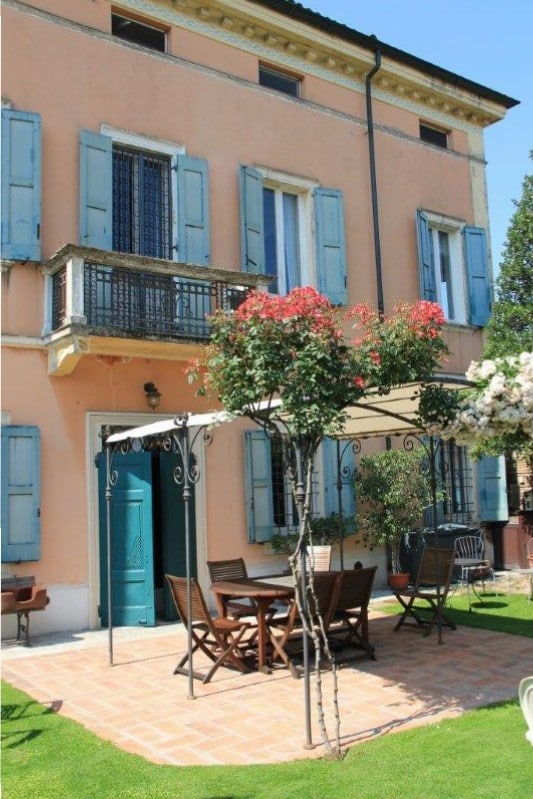
Traditional Balsamic Vinegar of Modena Producers
Acetaia Villa San Donnino (strada Medicina 25/1, San Donnino (+39 340 2579734) Acetaia@villasandonnino.it
A large villa out in the countryside (more difficult to reach if you do not have a car.) A note about location- this is not the restaurant of a very similar name located near the corner, the vinegar production is a large villa set back from the street, on the same side as the restaurant. The sign was hard to find/read and the only thing visible from the road is the iron gates.
Acetaia di Giorgio, Owners: Giorgio e Giovanna Barbieri, +39 059 333015, www.facebook.com/AcetaiaDiGiorgio, info@acetaiadigiorgio.it
Acetaia di Giorgio is located just outside the old town in Modena and is easy to get to if you do not have a car. You are visiting the home of Giorgio e Giovanna Barbieri the proprietors as production is in the family villa, as it has been for generations. When you walk in the front door the aroma of vinegar greets you. The villa itself is fantastic with many of the original features including the frescos on the walls.
Acetaia Giusti, eventi@giusti.it
They runs tours throughout the day, relatively easy to join one, just need to make contact and make a booking. We did not visit this one, but did get a reply to arrange a time/tour.
If you love Italy, you might also enjoy these posts:
The Emilia Romagna Region in Northern Italy: Home to Great Food
Herb Crumbed Fish Recipe inspired by the Venice Fish Market
Veneto beyond Venice
Italian Wine, Grappa and Tiramisu: Unwinding in Veneto
A Perfect Day in Venice
And to help you plan your trip to Italy:
Traveling in Italy: What you Need to Know
To further explore the food and culture of Northern Italy:
Parmigiano Reggiano Cheese: the Whole Delicious Story
Modena Market Porcini Mushroom Risotto with Truffle Oil
Tortellini with Sage and Butter Sauce
Italian Antipasto Platter
Penne Puttanesca an Italian Classic
Baked Stuffed Zucchini Flowers or Squash Blossoms
Italian Dinner Party
So just a parting question- have you ever tried Traditional Balsamic Vinegar of Modena? And if so what did you think?
Enjoy!

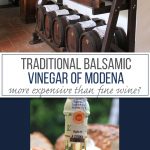
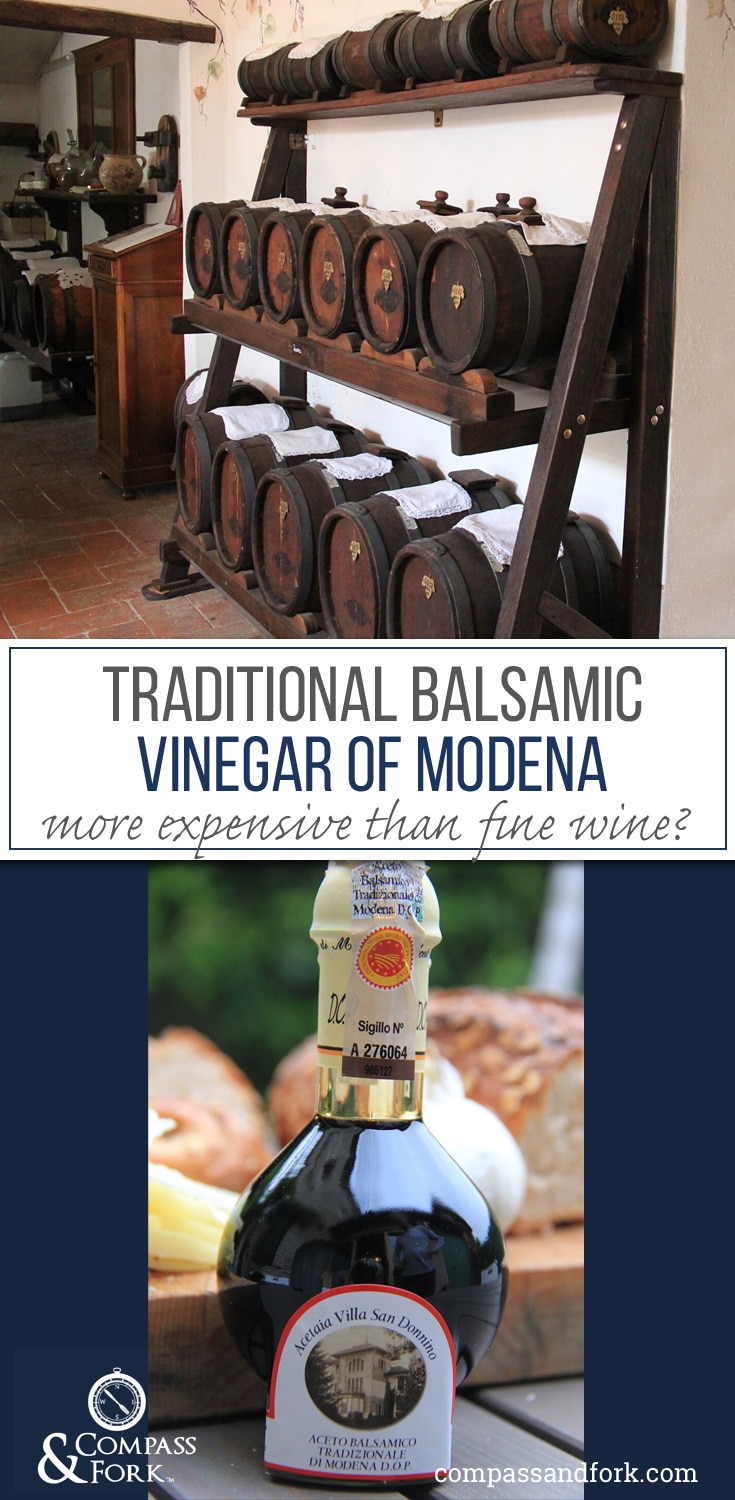
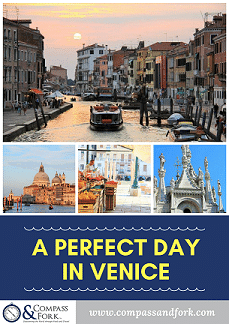
Donna
I love your ‘lessons’ behind the food! I had no idea there was such a difference between what I am buying in the store, and what the real deal is. Great post, thanks for sharing!
Editor
Hi Donna. I am so sorry I missed your comment and have only just now replied. Thanks for your comment. We really enjoyed unearthing these secrets around vinegar and we also learnt lots in the process.
Marie
We love balsamic vinegar here, but after reading this I can say we’ve never had authentic balsamic from Modena. Very interesting!
Editor
Hi Marie. Thanks for your comment. Who would have thought that there was so much work and time involved in producing “real” vinegar. We really got a lot of these tours. Cheers….Mark
Jenn
Fascinating! I could drink vinegar straight from the bottle…especially balsamic. And that’s just the grocery store kind. I can only imagine what the really good quality stuff tastes like! Must be like magic! 🙂
Editor
Thanks for your comment Jenn. Yes the real vinegar is a slight indulgence, thick and slightly sweet. Cheers….Mark
LydiaF
After reading your post, I’m also sure I’ve never had authentic balsamic vinegar from Modena…and at 40 euros a bottle will probably content myself with lesser types, hahaha.
Editor
Thanks for your comment Lydia. Yes it is not cheap (and is more expensive than good wine). It is worth a try once in your life to really appreciate how sweet and thick it is compared to industrial vinegar.
Cheers….Mark